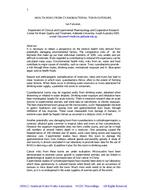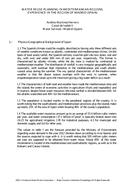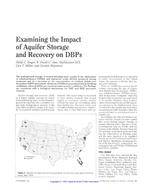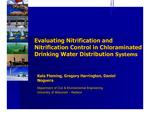Provide PDF Format
AWWA WQTC55110
- Health Risks From Cyanobacterial Toxin Exposure
- Conference Proceeding by American Water Works Association, 01/01/2001
- Publisher: AWWA
$12.00$24.00
This extended abstract discusses why it is necessary to obtain a perspective on the relative health risks derived from potentially damaging environmental factors. Risks regarded as contributing to reduced life expectancy can be calculated many ways. Environmental health risks, risks from air, water and food contribute to major causes of mortality, such as cancer. Toxic cyanobacteria provide a risk through three routes, drinking water, recreational exposure and in blue-green algae sold as health foods. Natural and anthropogenic eutrophication of reservoirs, lakes and rivers has lead to many locations in which toxic cyanobacteria thrive, often to the extent of forming water blooms. When these occur in drinking water reservoirs or rivers abstracted for drinking water supply, a potential risk exists to consumers. Cyanobacterial toxins may be ingested orally from drinking water, absorbed when showering or inhaled in water droplets. Drinking water exposure and inhalation have been investigated, largely for acute toxicity. The best characterized toxin group are the microcystins, cyclic heptapeptides resistant to gastric hydrolysis and causing liver and gastrointestinal tract injury through inhibition of key enzymes. These cause measurable liver damage in humans, in extreme cases death by hepatic failure as occurred in a dialysis clinic in Brazil. Another potentially very damaging toxin from cyanobacteria is cylindrospermopsin, a cytotoxic alkaloid quite common in tropical lakes and rivers at low concentrations. However the organism responsible does not form visible scums, and can be in high cell numbers at several meters depth in a reservoir. Experimental studies have shown this toxin to damage the gastrointestinal tract, liver, kidneys, adrenal glands and possibly gonads. Cancer risks from these toxins are under evaluation. Microcystins have been demonstrated to promote cancer growth in experimental animals, and are linked in epidemiological studies to increased rates of liver cancer in China. Experimental studies of cylindrospermopsin have recently been done which show genotoxicity in cultured human white blood cells, and an occurrence of tumors in mice dosed with the toxin. Much more work needs to be done on this toxin, as it is so widespread in the water supplies of warmer parts of the world. Includes 2 references.
Related Products
AWWA SOURCES55670
Water Reuse Planning in Mediterranean Regions: Experience in the Region of Madrid (Spain)..
$12.00 $24.00
AWWA JAW34942
Journal AWWA - Examining the Impact of Aquifer Storage and Recovery on DBPs..
$15.00 $30.00
AWWA WQTC60566
Evaluating Nitrification and Nitrification Control in Chloraminated Drinking Water Distribution Syst..
$12.00 $24.00





